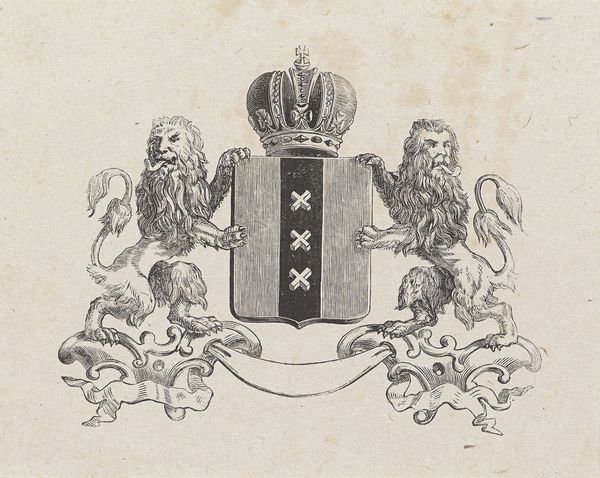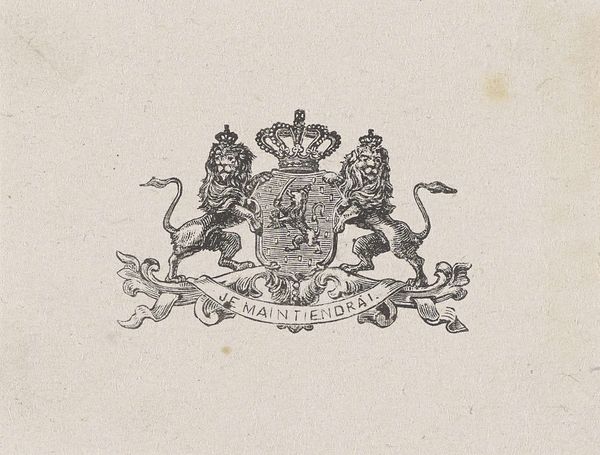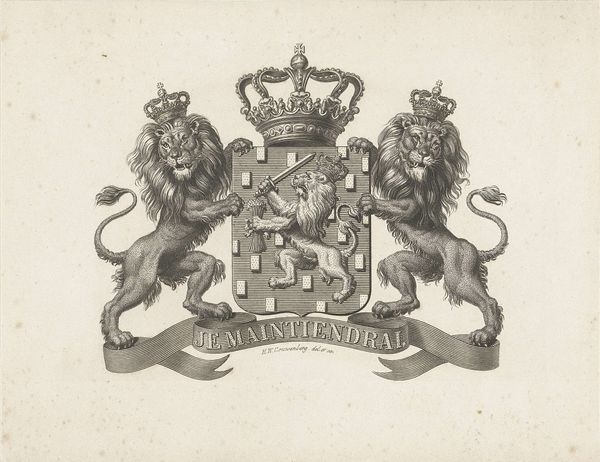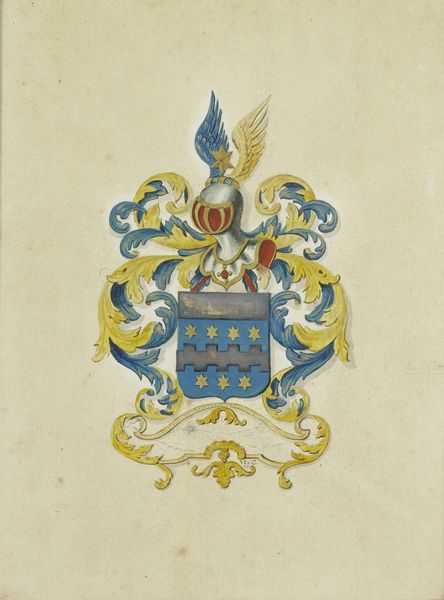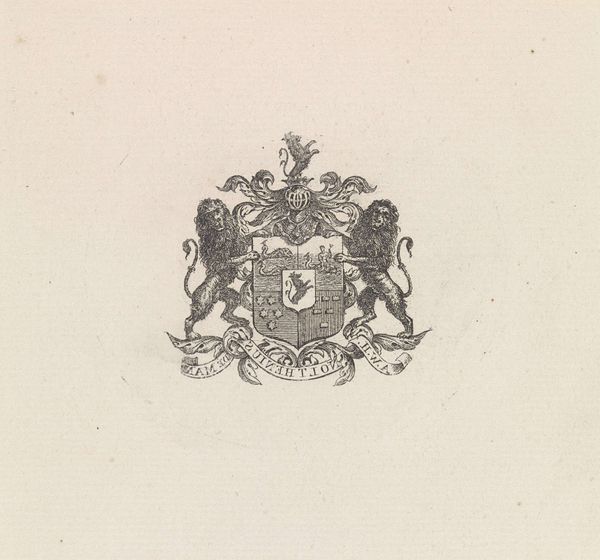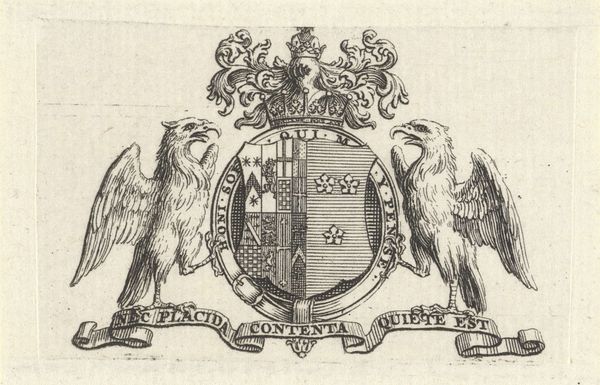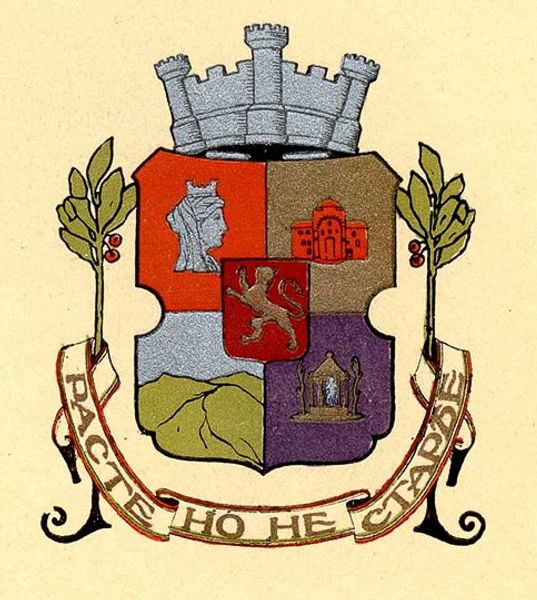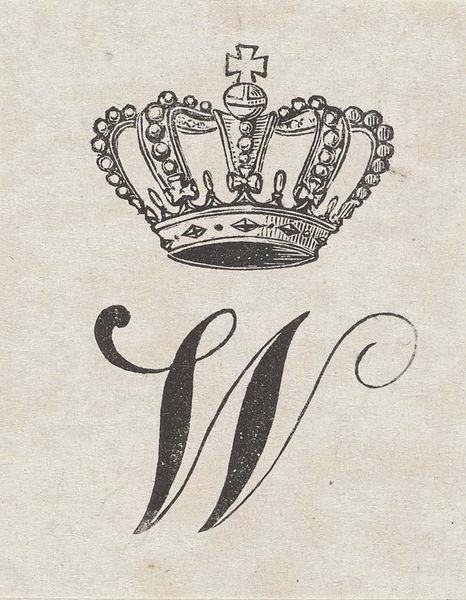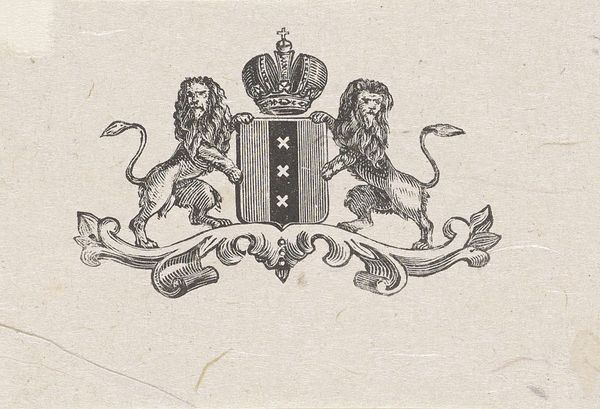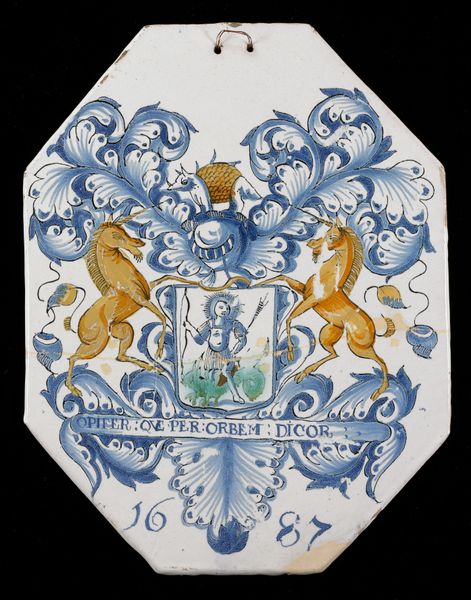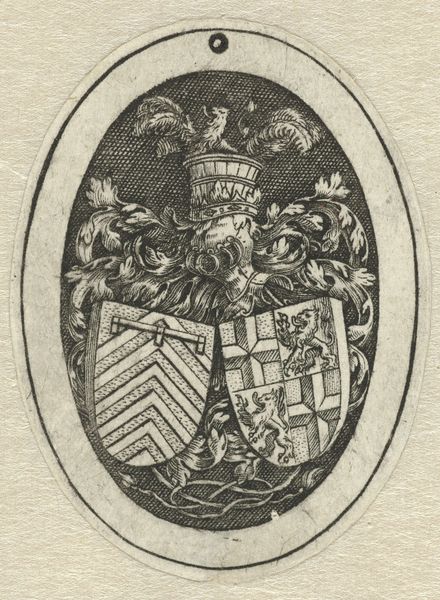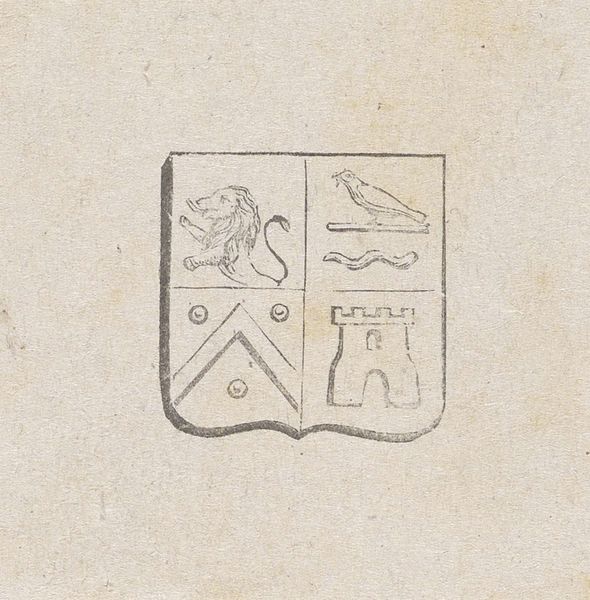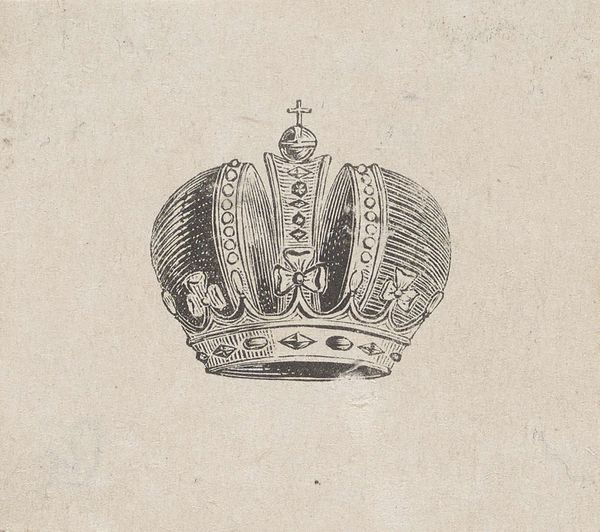
drawing, print, ink, engraving
#
portrait
#
drawing
#
medieval
# print
#
ink
#
engraving
Dimensions: height 71 mm, width 81 mm
Copyright: Rijks Museum: Open Domain
Curator: Look at this small but detailed print. It's entitled "Vignet met het wapen van paus Pius IX," placing its creation sometime between 1846 and 1912. The artist is Isaac Weissenbruch, and it is currently held at the Rijksmuseum. The piece employs ink and engraving, and depicts a papal coat of arms. Editor: My first thought is how the crown almost levitates above the heraldic shield, dominating the composition despite its small scale. The textures achieved through engraving, like on the ribbon beneath the shield, give it a tactile quality that’s quite appealing. Curator: Yes, Weissenbruch’s skill is evident in the rendering of different materials - the weighty crown versus the softer, draping ribbon. It's interesting to consider the labor involved in creating such a precise engraving, especially given its relatively small size. The creation of images like this reinforced power structures of the church and disseminated it through mass production and access. Editor: And considering the socio-political context of Pius IX’s papacy – a period marked by significant upheaval and the loss of the Papal States – this emblem, with its assertion of papal authority, becomes even more potent. It functions as propaganda as much as decoration. What's that inscribed on the banner beneath the coat of arms, then? Curator: It says 'PAX VOB[iscum],' Latin for 'Peace be with you.' Which in contrast to the turbulent times it may represent, acts like visual promotion for this figurehead. Editor: The way the symbolic language intersects with political events makes the creation date a key piece of understanding the full purpose and resonance of the print within public life. How was the original engraving made? Curator: The use of engraving as a reproducible medium is crucial, enabling widespread distribution of this emblem and therefore consolidating the image and power of Pius IX across various social strata. The access given to lower societal ranks. Editor: Indeed. Considering the materials and their application, the engraving's scale facilitated distribution. And it reveals its wider implications for religious identity, representation, and socio-political control within a tumultuous period. Curator: Seeing it now, and reflecting on our conversation, makes me think differently about small scale printing and imagery! Editor: Me too; I see that small objects like this wield historical might, offering profound commentary on labor and society through careful consideration.
Comments
No comments
Be the first to comment and join the conversation on the ultimate creative platform.
